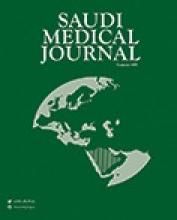Abstract
OBJECTIVE: Data on the distribution of beta-thalassemia mutations in Arab populations are usually destined to disparate locations and much of these become increasingly difficult for an average researcher to locate. That is why we aimed at establishing an electronic database network, called Deniz, for beta-thalassemia allele frequency distributions in the Arab world at http://biobase.fatih.edu.tr.
METHODS: The scheme of the database combines the benefits of the relational and hierarchical systems. Detailed statistics of the frequencies of beta-thalassemia mutations are retrieved in tabular forms. Multiple permanent connections allow flexible movement within the database. Queries are processed by the systems language and sent to the user's browser as hypertext markup language documents.
RESULTS: The database catalogues the frequencies of beta-thalassemia mutations in 14 Arab countries as pooled from the analysis of 3,138 chromosomes by 36 laboratories. Of the 57 B-globin gene mutations reported in Arabs, IVS-I-110 (G-A), IVS-I-5 (G-C), IVS-I-6 (T-C), IVS-II-1 (G-A), and IVS-I-1 (G-A) are the most encountered and they account for approximately two thirds of the Arab chromosomes registered in Deniz.
CONCLUSION: In addition to its importance as a hub of updated information on the distribution of beta-thalassemia mutations in Arabs, information in Deniz may be used to predict diagnostic strategies that may be offered to natives of unstudied countries. Incidence data may also give important clues on the possible origins of beta-thalassemia in the Arab world. The integration of Deniz with other databases is currently in process and researchers are invited to contribute to the growth of the database.
- Copyright: © Saudi Medical Journal
This is an open-access article distributed under the terms of the Creative Commons Attribution-Noncommercial-Share Alike 3.0 Unported, which permits unrestricted use, distribution, and reproduction in any medium, provided the original work is properly cited.






